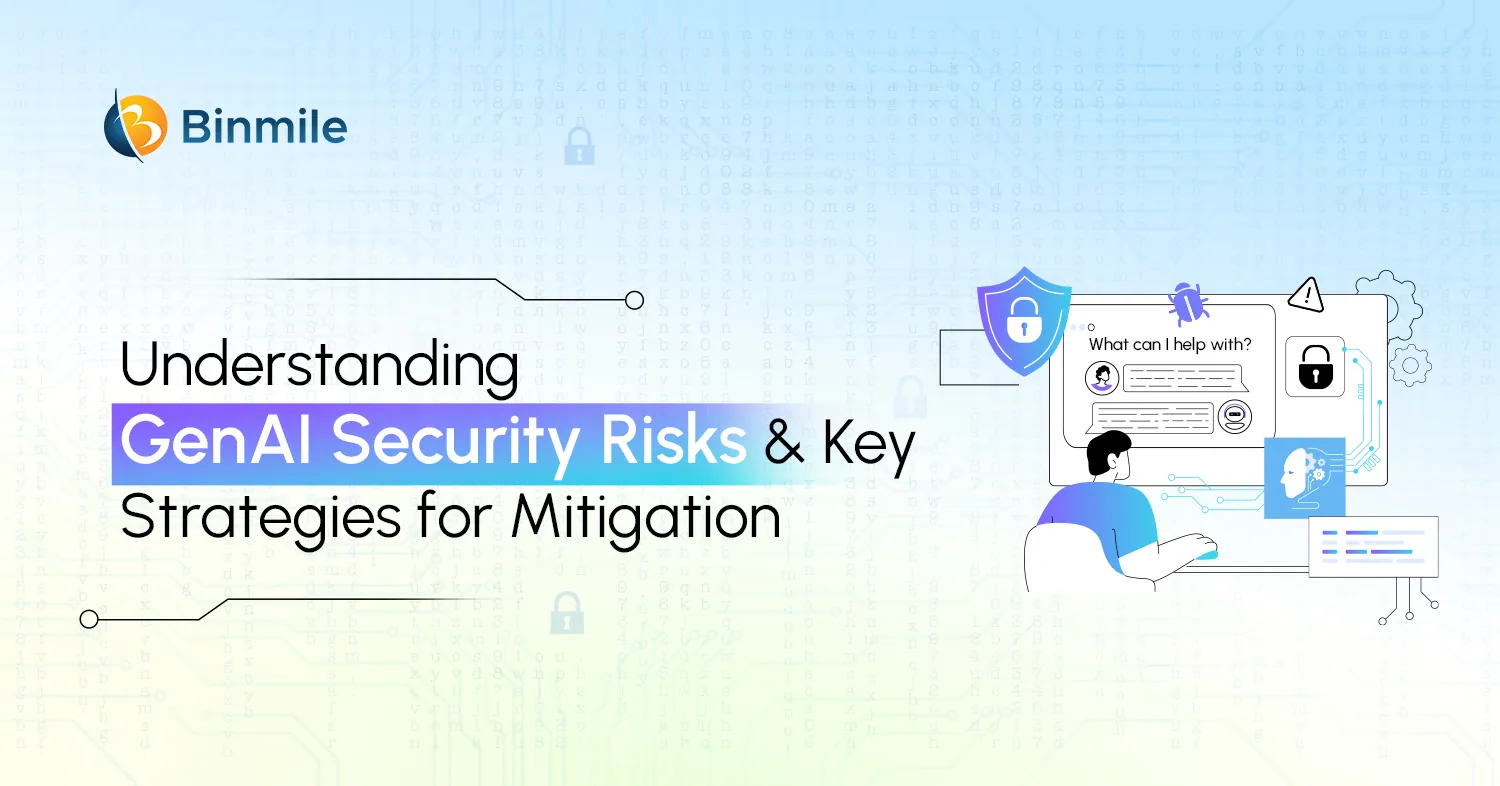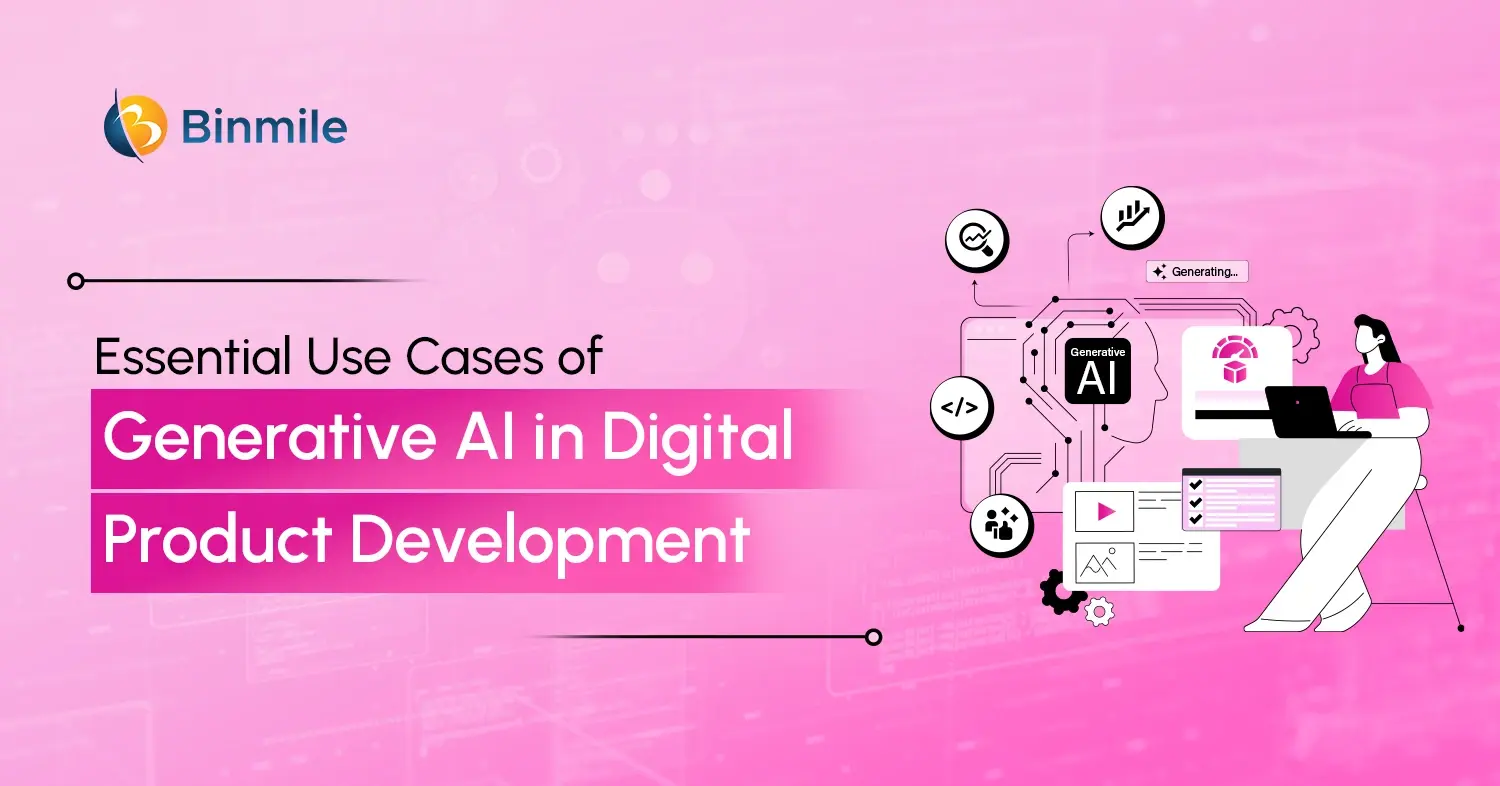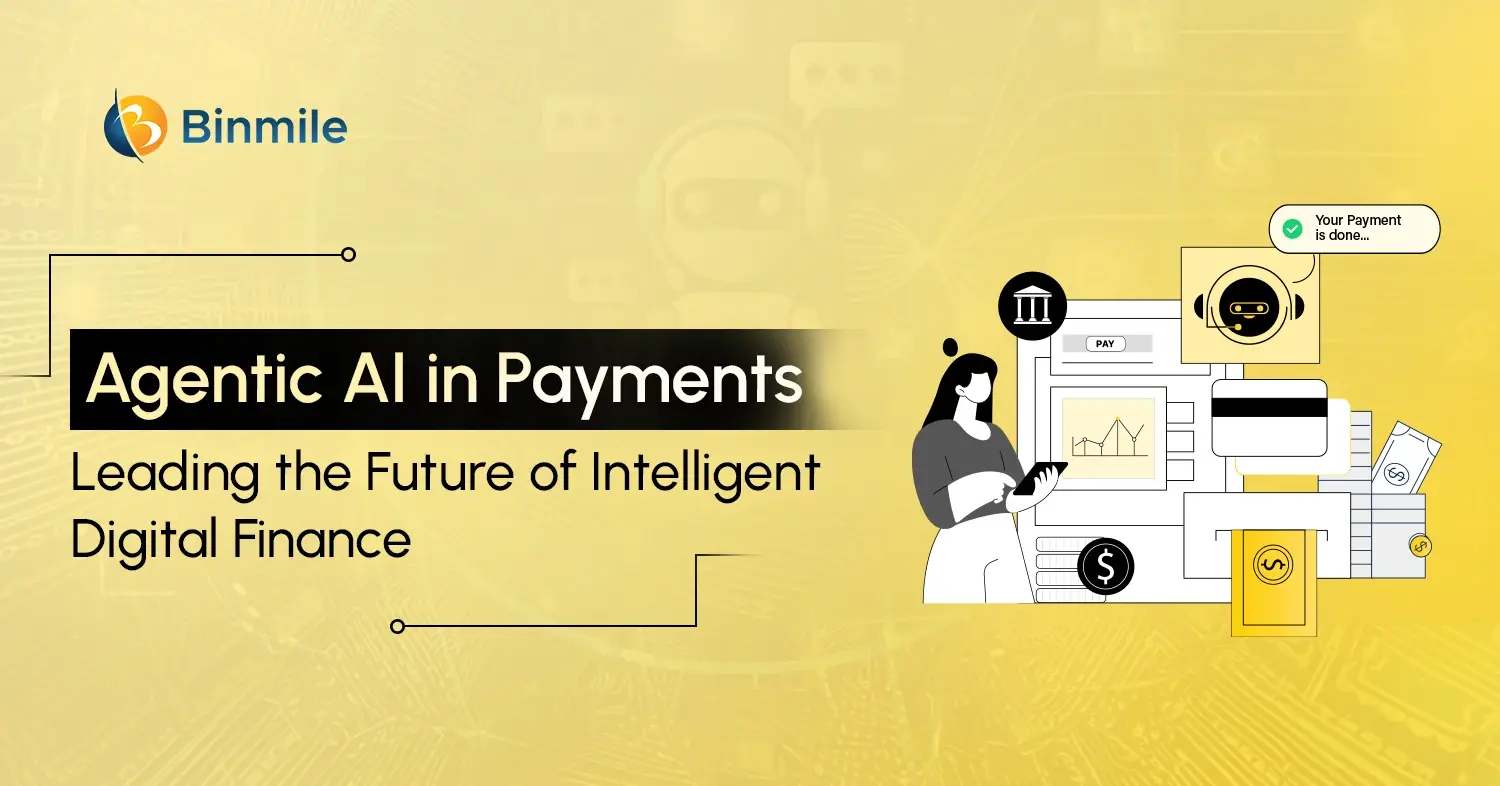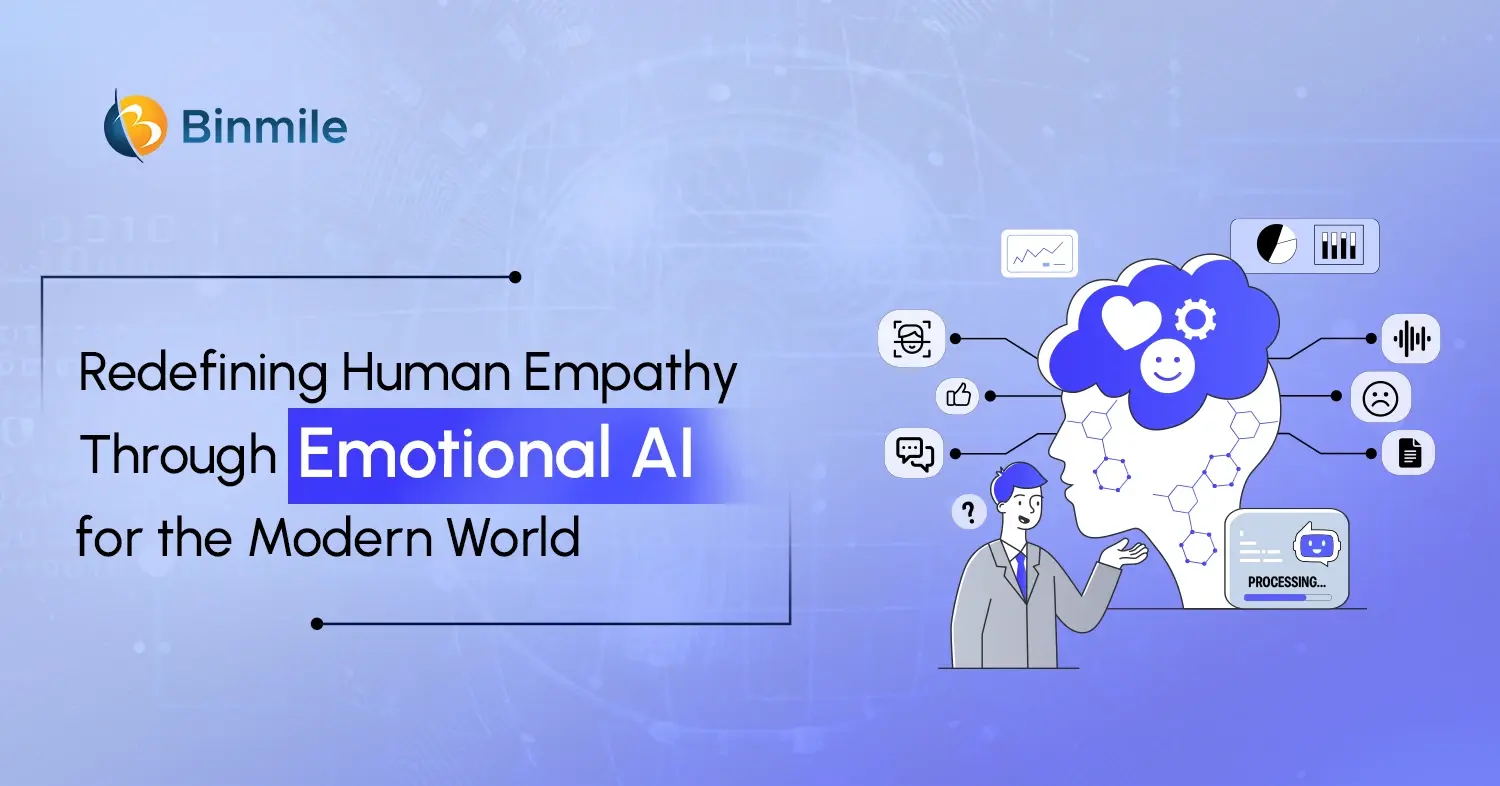The era of generative AI has brought in transformative changes in the way businesses are interacting with technology. From crafting compelling narratives to generating realistic images and even writing code, the potential of this AI business trends is limitless. However, to fully realize the benefits, organizations need a clear and compelling generative AI strategy and understand the risks that are involved with AI implementation. These AI models are increasingly integrated into our lives and businesses, so to reap value securely, organizations must prepare against such GenAI security risks proactively. Without careful consideration, it could result in catastrophic consequences for enterprises that include both financial and reputational damages.
Knowing these Gen AI cybersecurity challenges will enable your business to protect your Gen AI model’s integrity and credibility. In addition, it also ensures generated content is reliable and secure and prevents unauthorized access or manipulation. So what are these GenAI security risks? Or how can these risks be minimized? Protecting these systems ensures they function as intended, prevents misuse, protects AI’s integrity, and ensures generated content is reliable and secure. In this blog, we will discuss 5 key security challenges associated with generative AI, explore the potential risks, and offer practical solutions to safeguard against these GenAI security challenges.
Gen AI Security Risks Explained: A Comprehensive Introduction
Generative AI technology, with its capability to generate new content from a vast volume of data, makes them targets for attacks aimed at compromising the system or producing harmful outputs. Moreover, the consequences can range from the propagation of misinformation to malicious content. So, let’s understand why businesses must understand the security risks and implement appropriate measures to mitigate them:
- Data Privacy Concerns: AI systems may inadvertently expose sensitive business data, risking privacy breaches. Moreover, unauthorized access to confidential information can result in legal and financial repercussions.
- Automated Social Engineering: Gen AI can automate social engineering attacks, making them more convincing and scalable. This increases the likelihood of successful phishing attempts and other cyber threats targeting employees.
- Malicious Code Generation: Another GenAI security risk is that it can generate harmful code, which can be used to exploit business software vulnerabilities. This can lead to data breaches, system downtime, and financial losses.
- Bias and Discrimination: AI can perpetuate biases in training data, leading to discriminatory business practices, resulting in unfair treatment of customers or employees and potential legal challenges.
- Lack of Accountability: Determining responsibility for harmful AI-generated content can be difficult, complicating risk mitigation efforts. Businesses may struggle to identify the source of issues and implement effective solutions.
Ensure your AI solutions are secure by working with our expert AI developers–Secure your future with top-tier Gen AI security expertise.
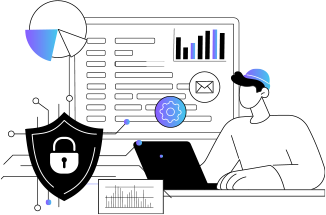
According to a report by Deloitte Center for Financial Services, generative AI email fraud losses could total about $11.5 billion by 2027. In addition, certain industries, such as BFSIs, are at huge risk due to AI-generated fraudulent content. These fraudulent activities can lead to significant value erosion, with an additional annual impact estimated between $200 billion and $340 billion. This underscores the growing relevance of fintech in cybersecurity, where financial institutions must adopt AI-driven safeguards to protect sensitive data and digital assets.
Fintech companies, in particular, face growing cybersecurity threats as they rely heavily on digital operations, making them prime targets for sophisticated Gen AI-driven attacks.
We have understood so far that Gen AI cybersecurity risks create challenges for businesses that go beyond monetary damages. So, let’s understand how your business can effectively utilize generative AI potential for optimal results.
Quick note: these challenges and their solutions are based on our own experience guiding top-tier companies globally.
Securing Your Digital Assets: Addressing 5 GenAI Security Risks with Confidence
So, here are the five most common GenAI security mistakes that we have seen companies make and the best course of action you must take:

Mistake 01: Weak Governance
Inadequate governance of AI development and deployment produces a chaotic security ecosystem that leaves security work to the end of the process. Security practices in such situations will become erratic while vulnerabilities manage to bypass the safeguards because roles and responsibilities remain ill-defined along with missing processes. Poor security practices occur, which result in various operational issues that include both data breaches and compliance violations. Therefore, the absence of clear responsible parties for securing or managing AI systems can lead to disastrous outcomes.
Solution:
Organizations need to form a specific AI governance committee that combines IT professionals with members from security teams and business departments to legal representatives. This established committee must create detailed policies about Gen AI implementation practices and protection regulations. Your business should perform scheduled compliance checks and audits to support documented processes that approve new AI implementations. Having a systematic method of AI implementation allows organizations to maintain security protocols throughout their initiatives and creates standardized measures for appropriate AI development and deployment.
Mistake 02: Bad Data
Generative AI models obtain their learning functionality by processing the data through their training procedure. If that data is flawed—inaccurate, biased, incomplete, or containing malicious information—the AI’s output will reflect those flaws. For instance, a biased training dataset will cause AI systems to generate discriminatory judgments in recruitment processes as well as financial loan processes. Additionally, if there are some vulnerabilities present within training data, it potentially increases their magnitude during the modeling process.
Solution:
Businesses need to implement data validation through automated systems that will verify both the accuracy and integrity of their information. This helps them achieve rigorous quality management. The organization needs to keep thorough records about their data sources along with scheduled examinations to check for bias in their systems. The use of synthetic data creation enables training procedures for sensitive applications without privacy violations. The AI development lifecycle needs to contain scheduled data quality assessments, which include automatic cleaning methods and documented protocols to manage data irregularities and defend against poisoning techniques.
Mistake 03: Excessive, Overpowered Access
It is simple math; if your Gen AI models do not have access to all critical or sensitive information, then they are more prone to vulnerabilities if the systems face a Gen AI cybersecurity risk. An AI system that is compromised by any fault can provide an easy way for attackers to spread vulnerability across large networks. In addition, these models with access to a wide range of sensitive information become vulnerable to exploitation by potential attackers for data leaks.
Solution:
The implementation of strict access controls with the least privilege should be the basis for permission grants to AI systems. Ensure your systems are separated using network segmentation to keep them from accessing critical infrastructure, while API gateways should have a strong authentication setup, and complete access logs must be maintained. The organization should perform periodic access reviews for detecting unused permissions as part of its security measures. The process of access privilege management should use perpetual active monitoring to ramp up or scale down system permissions according to real-time utilization data.
Mistake 04: Neglecting Inherited Vulnerabilities
Systems based on AI technology function without operating exclusively as standalone units. When you are utilizing Gen AI in product development, these systems implement operations through extensive networks of third-party libraries, open-source code, and APIs. The inheritance of security vulnerabilities by the AI system occurs whenever one of its components presents such weaknesses. Attackers take advantage of system vulnerabilities in order to compromise the AI with ease even when the AI programming codes remain secure. Neglecting the vulnerabilities that programs have through birth is a crucial mistake.
Solution:
Security evaluations should occur extensively for third-party AI elements before integration, including code reviews and penetration testing. The organization must keep an extensive list of all AI elements and their related assets while establishing robotic systems to detect and solve security flaws. Organizations should enforce strong container security through image scanning in combination with runtime protection to properly defend their AI workloads. Every inherited component requires security updates and proper patch management through established regular procedures.
Mistake 05: Assuming Risks Only Apply to Public-Facing AI
Organizations make a wrong assumption that risks associated with artificial intelligence affect only external AI systems accessible to the public, as security teams in many organizations allocate their security measures to the AI systems that interact with the public, such as chatbots and image generators. However, internal AI applications that support data analysis, make decisions, and generate code expose comparable risks to the security of the said system. One must understand these systems manage both critical internal information and serve as potential targets for internal personnel threats.
Solution:
All Gen AI tools for SMBs need to receive complete security controls, which are required irrespective of public accessibility. Organizations must base security policies on zero-trust security principles for complete access verification along with advanced monitoring for internal AI behavior and routine cybersecurity instruction for their staff operating with AI systems. Data loss prevention tools need to monitor internal AI system handling of sensitive information as they operate, and encryption should protect data both in rest and during transit operations. All internal AI systems require security evaluations at regular intervals using procedures equivalent to those applied to external systems.
Mitigate Gen AI security risks effectively and ensure safe AI operation–Secure your AI infrastructure with our trusted AI-as-a-Service platform.

Closing Thoughts
As it is rightly said, with greater power comes greater responsibilities; therefore, GenAI is at its best when it’s built securely and responsibly. Generative AI implementation presents both immense opportunities and significant GenAI security risks and challenges. It is imperative for businesses to understand these risks well, and not knowing the challenges timely will not only bring financial damages but also reputational damages. Therefore, organizations and their employees must be highly attuned to these security risks they may be incurring—and how those risks can be minimized.
In this blog, we discussed major GenAI security risks in cybersecurity and also explored best practices that apply across all industries and to every leader seeking big wins in the age of AI. When you prioritize security from the outset, your organization can confidently embrace the transformative power of generative AI while protecting your business from potential threats and ensuring its responsible and beneficial deployment. After all, the common goal is to leverage the power of generative AI in a secure way to deliver value to business and improve the lives of all who use it.
Talk to our AI experts and understand how our AI development services can help you understand generative AI security and help you protect your enterprise from potential risk.
Frequently Asked Questions
Model poisoning is a cyberattack where adversaries inject manipulated data into an AI’s training set to influence its behavior. This can lead to biased, inaccurate, or even harmful outputs.
How to Prevent It:
- Use secure, verified data sources for AI training.
- Regularly audit and validate training datasets.
- Deploy AI threat detection tools to identify anomalies.
- AI models may inadvertently expose sensitive data through their responses.
- Employees might input confidential data into AI tools, risking leaks.
- Attackers can exploit AI-generated outputs to extract proprietary information.
Prevention Strategies:
- Implement strong data encryption and access controls.
- Use AI tools with built-in data redaction capabilities.
- Educate employees about safe AI usage and data handling.
Generative AI presents risks such as data leakage, adversarial attacks, model manipulation, regulatory non-compliance, and AI bias. These risks can lead to financial losses, reputational damage, and legal consequences. To mitigate them, businesses must enforce strict access controls, monitor AI behavior, and ensure ethical AI development practices.
